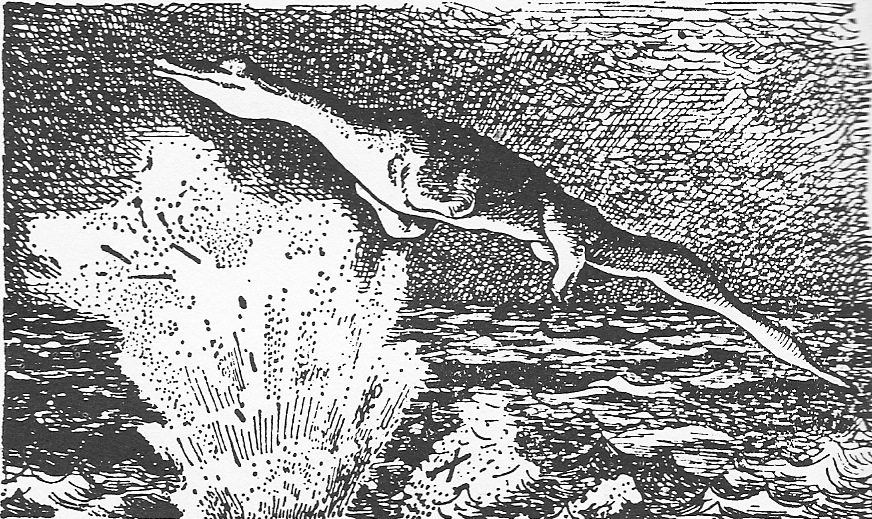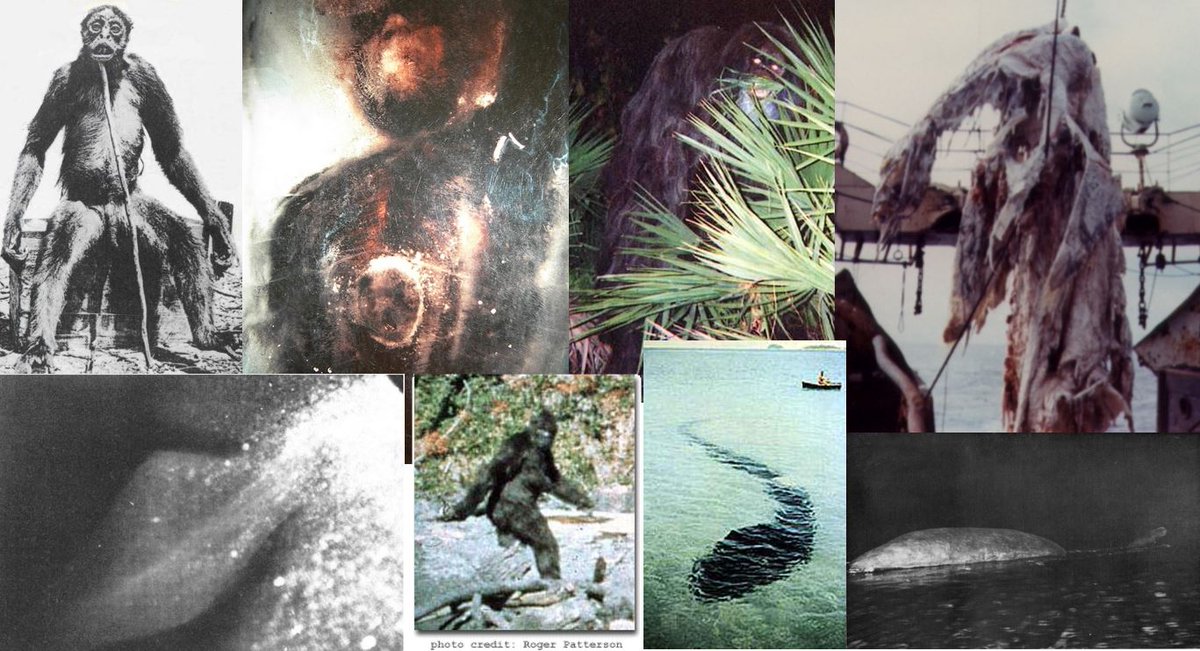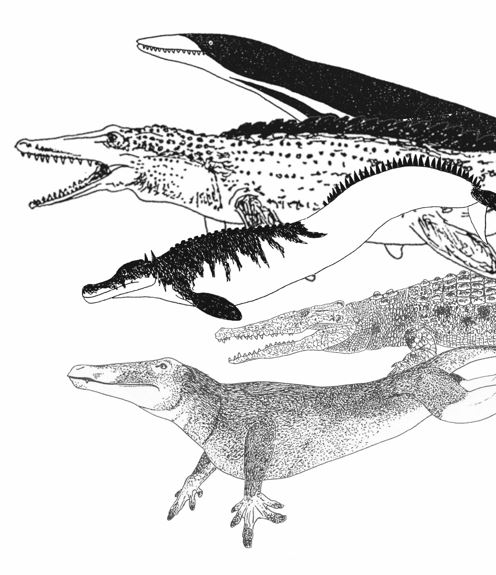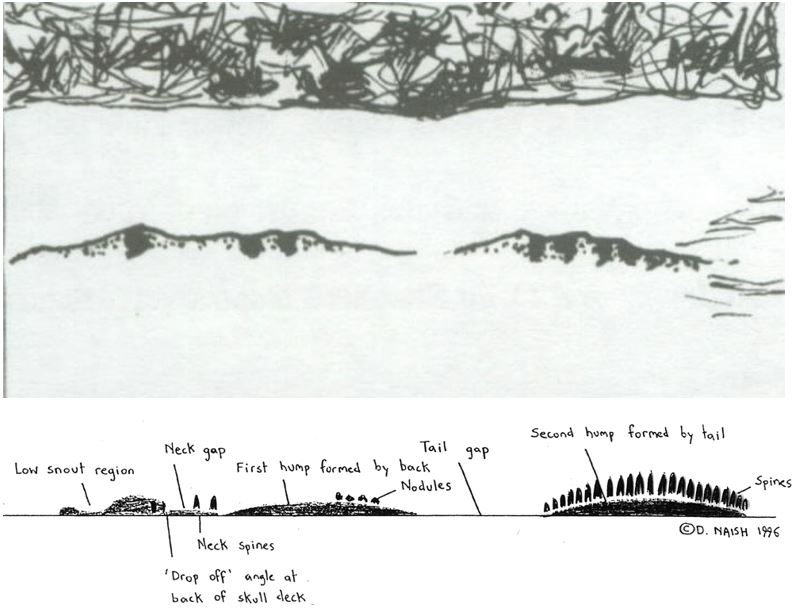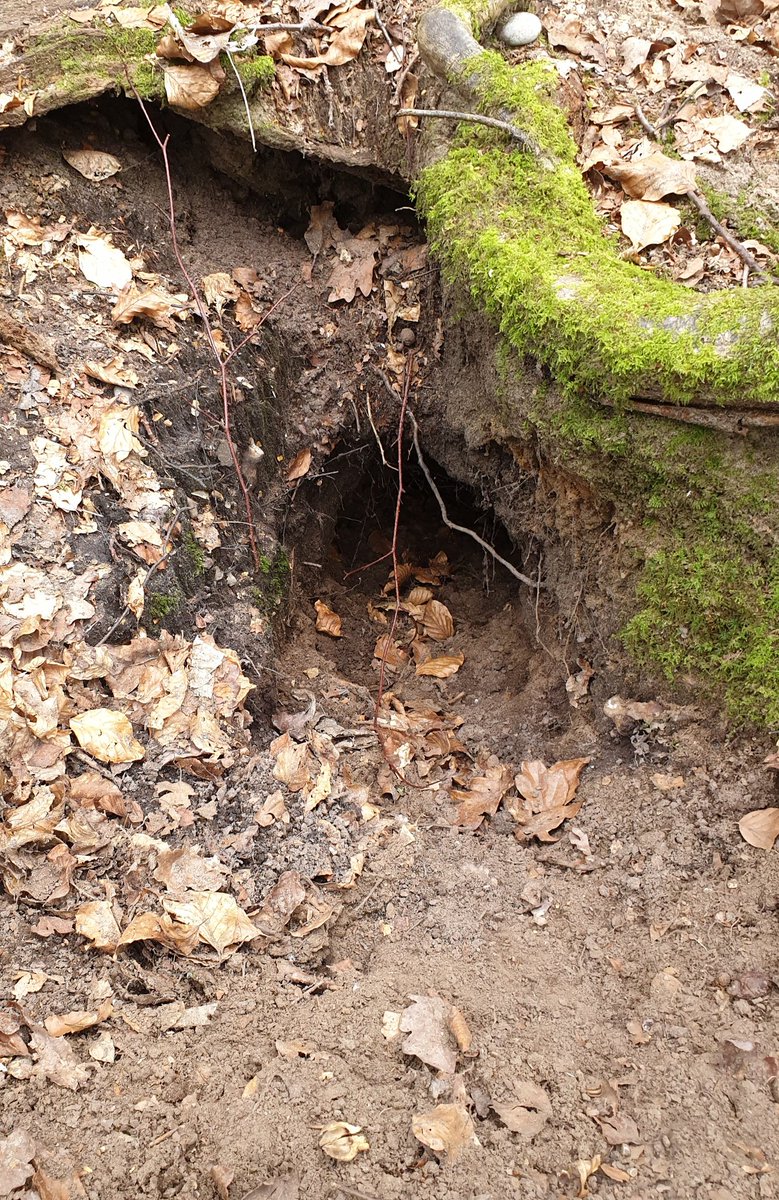
At long last, it’s time for another #TetZoocryptomegathread, wherein I look in detail at a piece of photographic evidence said to show a MONSTER. This time, we’re looking again at a #LochNessMonster photo, specifically the HUGH GRAY PHOTO of 1933.... #LochNess #cryptozoology 



This photo - famously hard to interpret - is the very first photo claimed to show the Loch Ness Monster! And I’ll mostly be calling it the Gray Nessie photo. To business…
As per usual, please remember that this isn’t called a megathread for nothin. It’s loooooong. Secondly, I am an ‘honest sceptic’. I am not biased, and I aim to report authentically what authors and reporters have said, on both sides of the proverbial fence... #cryptozoology 

While I report what ‘true believers’ have said and proclaimed, I counter or contest their statements where appropriate, and I do likewise with claims that come from a sceptical source but also prove wanting or poorly supported…
On that note, there are two negative forces at play in discussions on #Nessie. On the one hand, the True Believers insist that there’s a genuine mystery at play here, and they reject most sceptical claims as knee-jerk faux-scepticism, at the same time....
.... accepting terrible evidence (like indeterminate sonar traces, cool sounding eyewitness accounts and blurry photos like the one being discussed here) as if it provides valid support for the canon…
And on the other hand, there are ‘half-informed sceptics’: people whose starting point is that #cryptids cannot and do not exist, and who have half-remembered notions of given pieces of evidence being explained away or disproven...
I’m not a fan of this approach and generally find it cursory and unsatisfying…
Hugh Gray’s photo was supposedly taken on Sunday November 12, 1933 while he was – apparently – doing his regular ‘after church’ walk. Whether he customarily took a camera is unknown, but he had one on this occasion (so far as I know, we don’t know what sort of camera he had)… 

Nessie researcher and author Ted Holiday (more on him later) said that Gray had already seen a #Nessie on a previous occasion, and that’s why he carried a camera, though Gray didn’t ever say this to journalists or other researchers, which is odd...
In 1960, Gray _did_ tell Tim Dinsdale – another #Nessie researcher, shown here – that he’d seen the monster’s wake on “several” occasions, though whether such sightings were pre- or post-1933 isn’t clear… 



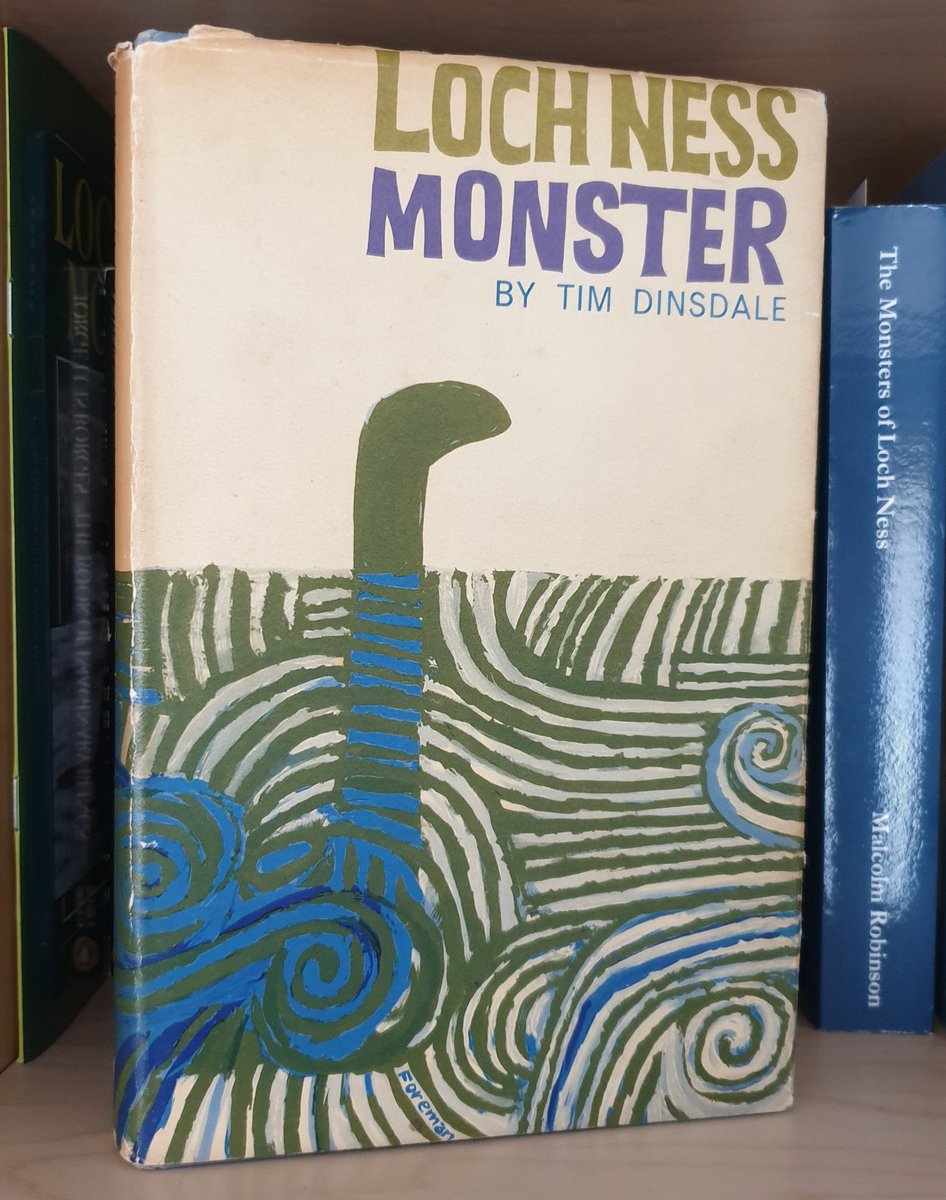

Gray’s key sighting occurred from the area of high ground – a bluff – just west of the River Foyers. This empties into the loch on its eastern side, about mid-way along the loch’s length; Foyers itself is located just north of the river’s mouth (image from Google maps)… 

Holiday even included a map showing the exact location from which Gray’s sighting occurred, and Dinsdale said that Gray took him to the exact spot. An unrestricted view of the loch was obviously present in 1933, but isn’t today as numerous trees now obscure the view… 

Gray said on occasion that he’d sat on the bank atop the bluff when he suddenly saw “an object of considerable dimensions” rise out of the water 200 yards away...
And he said to both Constance Whyte (author of the first #Nessie book, More Than a Legend) and to Dinsdale that there was considerable splashing and disturbance, and that about 40 ft of the creature was visible.... 

Apparently, the splashing created so much spray the that’s animal’s shape was mostly hidden/ Here's your reminder that behaviour of this sort at least _seems_ really unusual, especially for a super-elusive, scientifically undiscovered giant animal trapped in a lake...
Gray’s opinion on the photo in interviews was always that it was grey or greyish, and very large. He did say that a ‘rounded back’ and ‘thick powerful tail’ were visible, and also that the animal had smooth, glistening skin….
He was mostly vague about the size, saying at one point in 1933 that it was a remarkable 40 ft long but later noting in another 1933 interview that it was merely “very great”, and that it rose about 3 ft above the loch surface (hmm, try to remember this)…
Gray also said that the monster remained in sight “for a minute or two” and even “a few minutes”, which is a remarkably long time for a monster sighting and makes you wonder why he didn’t get more photos. Apparently, he took five but “only one was fit for printing”…
Surprisingly, he then supposedly left the film in a drawer for three weeks before his brother took it for development on December 1st. According to his interview with Rupert Gould (which happened quite soon after the sighting; Gould is shown here).... 



.... Gray thought that he’d probably missed the creature and hence not considered developing the photos a priority; we’ll come back to this…
In many of these #LochNessMonster photography stories, we know a fair bit about the camera used and the precise circumstances of photography. We don’t really have that for Gray’s photo...
It was apparently a ‘small box camera’. There’s mention that a representative from Kodak was able to certify that the negative hadn’t been tampered with – again, this comes from Dinsdale and it’s significant in mentioning a negative, since....
.... there’s no trace of the original today and it would seem to be lost (two ‘copy negatives’ were later discovered but I know nothing about them)…
However, one commentator – writing to Nature in 1933 – said that the photo was “not a direct contact print from an untouched negative” and Dinsdale said in 1973 that the photo had seemingly either been touched up or damaged during development…
These statements imply that the photo doesn’t _exactly_ depict whatever was photographed. Personally, I don’t think that these concerns matter at all since they don’t affect the gross appearance of whatever’s in the photo…
They also are more relevant to the poor version of the photo used widely in newspapers, not the far better version that’s used in most books on #Nessie (though read on for an ironic twist).… #LochNessMonster 

What do we know about Gray personally? Hardly anything. He lived at Foyers where he worked for the British Aluminium Company and had done so since 1916….
What do we know about Gray’s opinion on #Nessie? As always with these cases, it’s informative and arguably even essential to collect and assess what information we can on this matter. Nessie witnesses and promotors, you see, are virtually never just ‘lucky people’…
They are, on the contrary, usually people with a stated and known long-term interest in the phenomenon, or are linked with a history of unusual or even bullshit claims…
As I’ve said previously, there’s sometimes the implication that this ‘background biographical’ info is irrelevant to the assessment. I cannot disagree more. The person’s backstory is absolutely very much relevant. Here’s a cartoon (by me) that illustrates what I’m getting at… 

And Hugh Gray was one such character. He wasn’t just some random dude who was strolling along and just happened to spot #Nessie. As is obvious from the info on Gray published by pro-Nessie author Constance Whyte in her 1955 book, Gray, you see, was a True Believer…
By the time Whyte interviewed him, Gray claimed to have seen #Nessie SIX times (some sources say five, which is what I reported in Hunting Monsters)…
How we deal with information like this very much depends on bias. To another #Nessie True Believer, it might be reasonable, perhaps even likely, that an interested local person, on the lookout for Nessie, should see the animal on some number of occasions...
To a sceptic, multiple sightings ring alarm bells, and perhaps show that the person is a fantasist or routine hoaxer, or at the very least overly prone to ‘over interpret’ or misinterpret the things they see…
From a pragmatic, truly sceptical position, let’s remember that unknown animals are meant to be both rare and highly cryptic: that’s why they’re still unknown to science. Ergo, the odds of seeing them are extraordinarily low....
Ergo, any person who claims multiple sightings is making out that the animal is easier to find and easier to see than literally all other evidence would seem to indicate…
Anyway, Gray realised that his photo was a big deal and sold it to the newspapers: not to the local Inverness Courier but to the Daily Record (based in Glasgow) and the London-based Daily Sketch (which was later absorbed into the Daily Mail)…
We don’t know how much Gray was paid but it was likely a significant enough amount to make the effort worthwhile…
Did Gray definitely take the photo 3 weeks prior to its being developed, as he said in interview? We don’t know, but Binns regards this as suspicious enough to suggest a later date: perhaps it was taken on November 30th, the Thursday before the development date of December 1st….
November 29th, you see, had seen the Inverness Courier cover the fact that Rupert Gould – author of the first Loch Ness Monster book to appear in print – was investigating the monster and had come to the conclusion that #Nessie was a landlocked sea-serpent… 

Maybe, Binns argued, Gray’s vaguely serpentine Nessie was somehow crafted in response to this news about Gould’s views (Gould’s plate featuring Gray’s Nessie shown here). This only works, however, if Gray _planned_ the photo as a deliberate hoax... 



Binns thinks that this is exactly what happened, but my preference is that things were rather more happenstance. On which read on….
After appearing in the Daily Record and elsewhere, the photo became famous and much reproduced. Gray was apparently formally interrogated by a number of officials, including representatives of the British Aluminium Company, and (as Binns has noted) there’s some indication that...
.... the description of events he provided was both conservative and evasive: he repeatedly spoke only of ‘the object’ for example…
What, specifically, does the photo show? Gray's #Nessie is a blurry amorphous blob with a slender projection at its left and a short, triangular projection at its right. The object casts what looks like a shadow on the water (this is presumably a reflection more than a shadow)… 



The pointed projection at the right has a diagonal ventral border that slopes upwards from the water to meet a near-horizontal section that’s convex on its upper side… 

Close to the mid-point of its length are two pale triangular patches surrounded by dark areas. To their right are a series of amorphous dark patches, and beneath all of these features – right against the waterline – are two lateral projections… 



We’ll be referring to a few of these features later on in this thread, so they need labelling for ease of reference. In particular, we’ll need to come back to (1) the pale patches, (2) the lateral projections, and (3) the pointed posterior projection… 

Mention has been many times of the substantial amount of ‘spray’ or ‘wash’ visible in the photo. Some authors have taken this at face value and imagined that the photo shows great sheets of water being thrown skyward around the creature… 

I think that this is nonsense and that the image shows no such thing. Note that there are places – marked in the image here - where we can definitely see ripples _through_ the object… 

I think that the image is double-exposed: that the camera (or its operator) failed to move the film on, and that it was exposed two or more times to a moving scene…
This explains, I contend, why the pale patches and their associated diagonal stripes appear twice. This double (or even triple) exposure demonstrates that Gray’s #Nessie was moving, this also meaning that the alleged ‘spray’ is _blurring_ caused by this movement… 

If you look at the diagonal lines near the pointed posterior projection (shown here) it’s _obvious_ that we’re looking at blurring: no way is this spray or anything to do with water at all…. #LochNessMonster #cryptozoology #monsters 

How have people interpreted Gray’s Nessie? Several different takes are on the table, and we’re now going to go through each of them. No 1 is that Gray photographed an unknown – probably giant – animal, inferred to be The Actual Loch Ness Monster...
A few authors (including Roy Mackal) have made vague noises about the photo showing Actual Nessie, but the vagueness of the photo means – so these authors have said – that more definitive conclusions can’t be stated. A few people have, however, been bolder and far more specific… 

And thus we come to one of the strangest deviations in the Gray story. In 1968, one of the most curious volumes on the #LochNessMonster appeared. Titled The Great Orm of Loch Ness and penned by Frank W. Holiday, it sought to explain #Nessie sightings as (get ready for it)..... 

.... those of a sort of gigantic invertebrate, termed by Holiday the Orm. Various monstrous serpents and dragons from mythology and art were also Orms, Holiday said…
And what – specifically – was this Orm? It was the gigantic descendant of a fossil animal from the Paleozoic of the USA called Tullimonstrum…
Yes: #Tullimonstrum, the so-called ‘Tully monster’. This is an unusual ‘worm-like’ fossil, named in 1966 from the Carboniferous rocks (which makes it about 300 million years old) of Illinois. It’s a weird animal… 

It has a long, oval body, tail fins at one end, a slender neck or proboscis at the other, and projecting bars close to the base of the neck. Numerous specimens are known… 

Unsurprisingly, there’s been considerable disagreement on the identity of #Tullimonstrum but authors have mostly interpreted it as a swimming worm, a mollusc or an early vertebrate…
Disagreement continues and key papers on its identity have been published as recently as 2016 and 2017. Here’s an amusing cartoon I drew back when the news about it perhaps being a vertebrate first broke… 

Holiday explained how the features observed, reported and photographed at #LochNess all supported his giant post-Carboniferous Tully Monster hypothesis. The Gray photo took centre stage, even appearing on the book’s back cover (the Surgeon’s photo appeared on the front)… 

According to Holiday, the Gray photo shows the neck segmentations typical for #Tullimonstrum, an ‘anterior hump’ and ‘posterior hump’, and the ‘anterior and posterior parapodia’ that Gray also identified in Tullimonstrum. He was referring there to the lateral projections… 


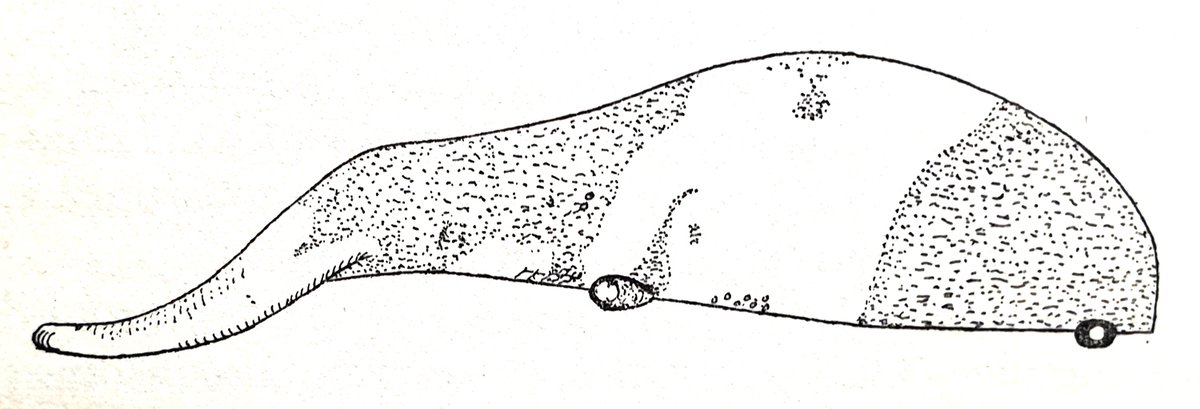
It should be obvious that Holiday’s idea is so wayward that it never was worthy of serious consideration, and indeed virtually all #Nessie researchers – even the most enthusiastic and credulous of them – have rejected it as silly nonsense only good for a laugh....
Indeed, it mostly gets a mention in Loch Ness Monster reviews because it’s funny, not because it’s worthy…
Incidentally, Holiday more or less retained his #Tullimonstrum idea for at least a while longer. In his follow-up book of 1973 (The Dragon and the Disc), he said that he’d had no reason to change the idea except in minor details... 

That book is, however, more to do with an ancient cult of UFO worship that has somehow been conflated with pagan nature worship – it’s a bit vague, to say the least…
A more recent claim that Gray’s #Nessie is The Actual Nessie comes from Nessie blogger and advocate Roland Watson. Watson has claimed in apparent seriousness that we’re seeing a cute, chubby-bodied, pokemon-like creature which is squeaking in surprise with an open mouth… 



It’s a cool idea. Interesting that it presents a view of #Nessie just about at odds with all other interpretations on what it’s meant to be like. I think that pareidolia is at play here, and that the open mouth and cute little face are woeful over-interpretations…
…. the ‘lower jaw’ he identifies is a ripple in the water behind the object and the ‘shadow’ is part of the reflection of the pointed posterior projection that doesn’t provide anatomical information… #Nessie #LochNessMonster #lakemonsters #monsters 

Equally famous as Holiday’s #Tullimonstrum idea is the notorious and daft ‘swimming labrador’ idea. A few people have noted that Gray’s #Nessie looks superficially much like a dog swimming toward camera with a stick in its mouth…
This is mentioned in quite a few books, perhaps the first to do so being Steuart Campbell’s The Loch Ness Monster: the Evidence of 1986 (it also made the UK tabloid press, see the attached article).... #Nessie #LochNessMonster 



Gray’s #Nessie isn’t a dog, for a list of reasons: the body would have to be invisible, the water surface is not at the right scale nor showing appropriate disturbance, the sharp lower edge of the object is inconsistent with the object moving toward the viewer, and....
.... the things that make the object look vaguely dog-like (an inferred floppy ear on the left, a dark ‘nose’ and two dark ‘eyes’) only superficially resemble those things, as is obvious if you look at them closely…
In short, the ‘dog with a stick’ is an extreme example of pareidolia…
Now we come to more sceptical opinions on the photo. It isn’t a giant Paleozoic worm, a swimming dog, or a mysterious aquatic craft crewed by a series of tiny alien people. So – what is it?
Well, is it even an animal? I think it is (read on), but its amorphous shape means that some have questioned this. 1961 saw publication of Maurice Burton’s The Elusive Monster, a fairly sensible book that includes a lot of useful analysis of sightings, photos and bits of film… 

Burton’s primary contention was that lake monster sightings are explained by gas-propelled mats of decomposing vegetation, formed variously of algal mats, tangled branches and weeds…
There are a few instances in which his idea actually seems pretty good (look at the photo on the book’s cover --- holy hell!!), but it could be argued that he committed the sin so common to those trying to rationalise monsters... 

... he tried to shoehorn all #Nessie sightings into a single specific favoured identity. That doesn’t work: Nessie is not one thing, it’s an innumerable number of things seen in and on the loch…
Burton’s discussion of the Gray photo includes the opinions put to him by several learned colleagues. He noted a suggestion from ichthyologist J. R. Norman that it was “a bottle-nosed whale … shark … or mere wreckage”. Way to hedge your bets, Norman…
The whale and shark ideas can’t have involved much in the way of thought and lack any and all support. As for the wreckage idea, Burton said that it was at odds with the spray and turbulence and could only work if the wreckage had fallen from the sky (I think this was a joke)…
Burton also noted a suggestion that the object might have been a “rotting tree-trunk brought to the surface by gases from the putrefaction of its cells”….
This was his favoured proposal, since it was most consistent with his vegetable mat hypothesis. It doesn’t explain the object well, though. There isn’t anything especially tree trunk-like about it, nor does this proposal explain the various anatomical details....
Indeed, Burton’s own diagram – shown here – makes the object plainer and less detailed than it actually is… 

We’ll finish on Burton by noting that he changed his mind anyway, later saying (in a 1969 New Scientist article) that it was an otter rolling at the surface. No Burton, no. There is nothing whatsoever otter-like here. We move on…
Also in the ‘not an animal’ camp is Ronald Binns’s suggestion that the photo is an outright fake. Binns first outed this in his 1983 The Loch Ness Mystery Solved (one of the most important #LochNess books) and revisited it in the 2017 The Loch Ness Mystery Reloaded… 

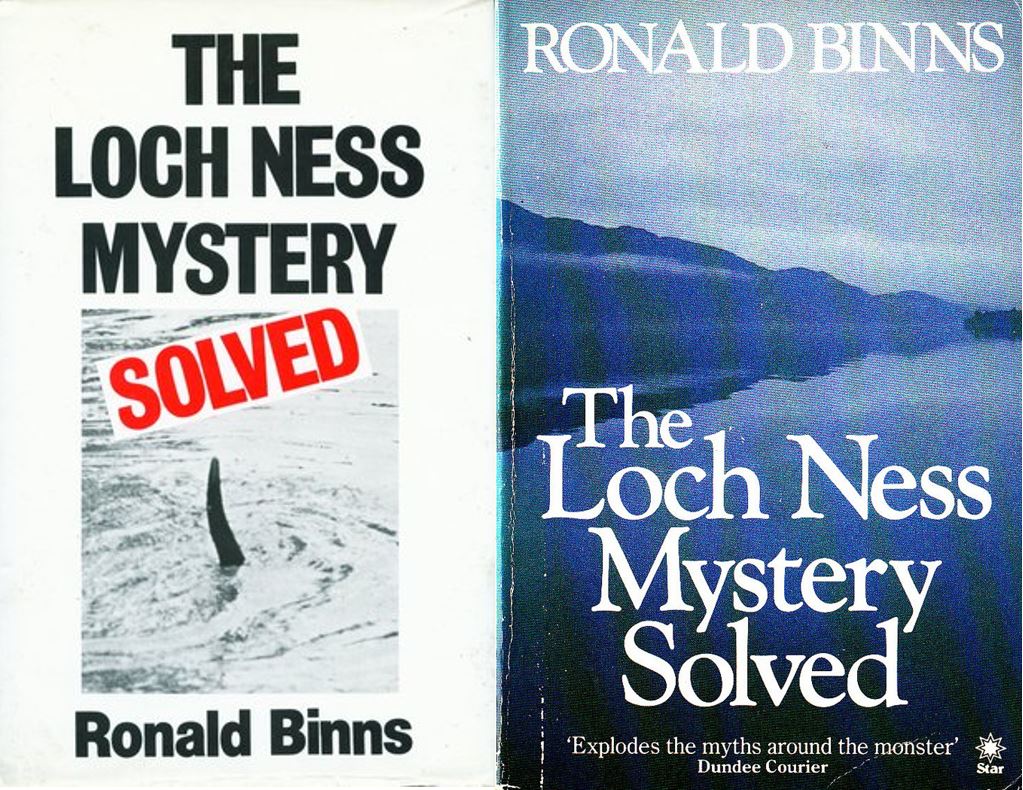

Binns pointed to several problems with the image. One is that it apparently isn’t possible to photograph something from the location identified (see upthread) without getting the shoreline and its foliage in view. Could the image be cropped? ...
Well, suggestions that it might be have always been denied and there’s no good reason to think that it was, nor is this consistent with those copies of the negative that exist…
Then there’s the issue of scale. This is so obvious, Binns said, that Gray’s claims about his #Nessie being photographed from great distance and being enormous are almost certainly bogus. Instead, the object was far closer to camera, certainly not 200 yards away…
Specifically, Binns says that “It was probably less than a yard in length, photographed in shallow water and just two or three yards from the camera”….
I haven’t done any mathematical analysis at all, but this feels right, based on the look of the ripples and on the identification I support (which we’ll get to shortly)…
More controversially, Binns has suggested that Gray’s #Nessie is a manufactured metallic model formed of components presumably available to Gray at the aluminium factory where he worked. I don’t see this myself and think it would be amazing if this were true… 

Vaguely similar to Binns’s proposal is Dinsdale’s of 1982 in which he now claimed (in contrast to his previous implications) that Gray’s #Nessie was a giant model, a view based on the fact that the lateral projections were interpreted by him as divers wearing diving helmets…
I can’t take this seriously. It would require the object to be enormous and, again, doesn’t look reasonable in view of the sense of scale provided by the water surface. I haven’t seen the 1982 edition of the book concerned to see the context in which it’s proposed; I’m curious….
Finally, we come to my own opinion on the photo. This is – and I’m fairly confident about it – that the object is a real animal, but an animal that has been misidentified. But it isn’t a giant #Tullimonstrum or a Pokemon, it is – rather – a member of a known animal species….
It’s a swan. Specially, it’s a Whooper swan. If you follow my writings, this isn’t a new idea as I outed it in #HuntingMonsters (published 2017) and it got a reasonable amount of media coverage back then in.... 
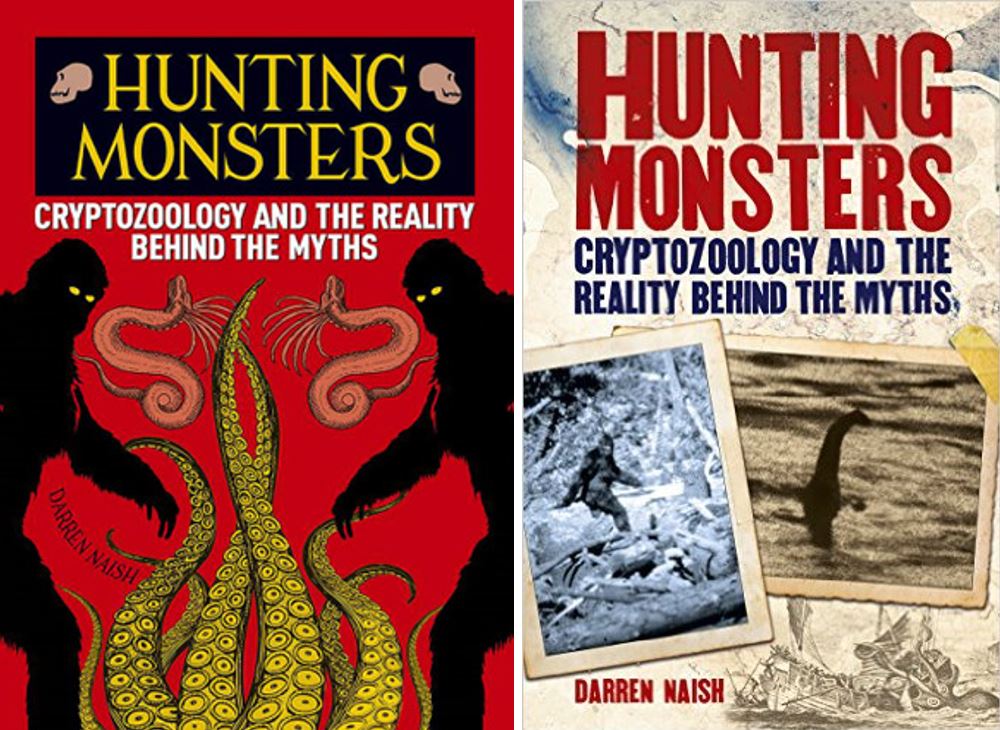
.... one of the those classic “ha ha, aren’t experts stupid for missing the obvious” news spins that the UK’s shitty tabloid newspapers love so much… #Nessie #LochNessMonster 

Why identify Gray’s #Nessie as a swan? Firstly, the ripples in the photo appear to my eye (I will admit that I have not done a vigorous analysis, forgive me) to show that the object is ‘mid-sized’: somewhere between 1 and 2 metres long, neither small nor huge…
Secondly, it’s very pale. We can’t know for sure what colour it was, but it’s so pale that it looks white, or at least off-white. Thirdly, it has a long, sinuous structure at one end, a short, pointy structure at the other, and is otherwise bulky…. 



Fourthly, it’s sat very high in the water. In fact, it’s mostly on top of the water, which is true of boats and most birds, but not of other aquatic animals…
So, we have a metre(ish)-long, pale object sat high in the water which has a long, slender extremity at one end and a short pointy extremity at the other. It gets better though…
Consider now the more specific small details. (1) The pale triangular patch on the Gray #Nessie is a good match for the yellow patch present on the bill and face of a Whooper swan, look at this montage I knocked up… 
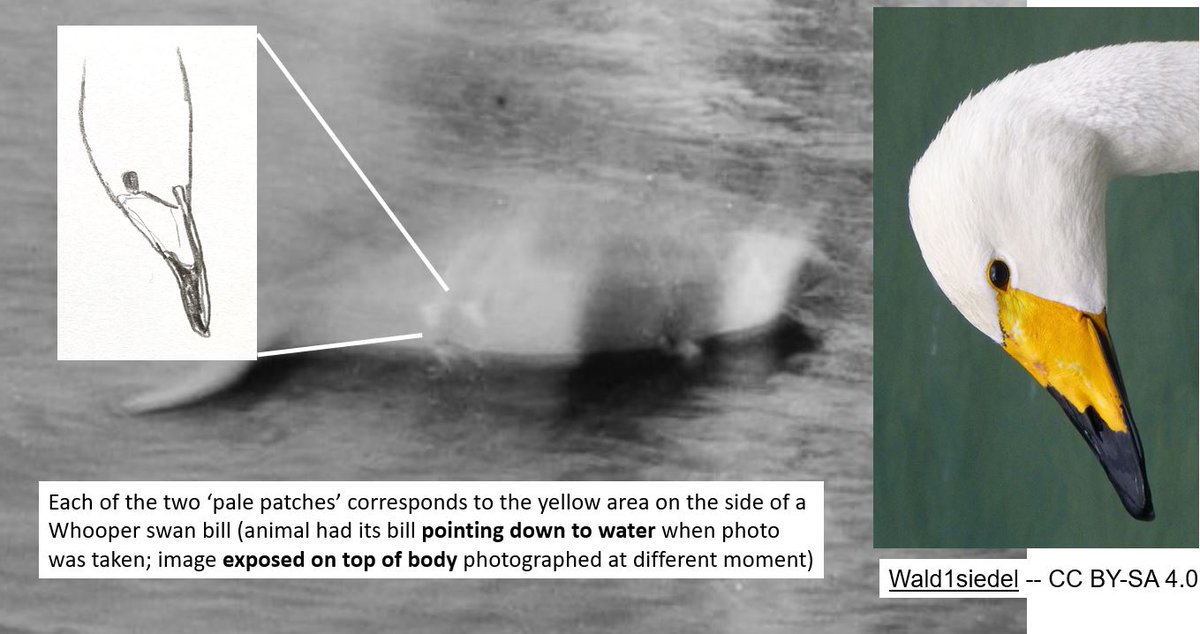
(2) ‘Lateral projection 2’ at the rear end of the Gray #Nessie is a good match for a projecting swan’s leg, the lump at the ‘end’ of the projection not being a termination at all but the bird’s ankle. The metatarsal part of the leg and the toes are concealed beneath the water… 



…. ‘Lateral projection 1’ is more ambiguous but its proximity to the pale patches strongly suggests that it represents the dark, terminal part of the bill (again, double-exposed on top of the body)…
(3) The posterior pointed projection (PPP), elevated above the water surface, is a good match for a Whooper swan’s tail. The Gray #Nessie’s PPP has a diagonally sloping underside that extends from the water to its pointed tip and a convex upperside…
Both features match at least some swan tails, as you can see from the montage here. Swans are highly variable in tail shape, but it’s of interest that the closest match is with Whooper swans in winter plumage (Gray’s photo, you’ll recall, was taken in November or December)…. 

(4) Finally, the anterior extremity looks more slender anteriorly and is deep at its base. This is again a good match for a swan’s neck. Obviously, the head is submerged. Getting a good image of a swan in this exact pose is hard, but these Mute swans are doing something similar… 

To test this idea further, I tried lining up the proportions of Whooper swans with Gray’s #Nessie. The caveat is that Gray’s Nessie looks is at an angle relative to the viewer, this meaning that it likely can’t be lined up precisely with a swan photographed in lateral view….
Sure enough, I couldn’t get a precise match. Buuuut the results are good enough for me to think that things work out… #Nessie #LochNessMonster #cryptozoology #lakemonsters 

'Lateral projection 2' of Gray’s #Nessie is in the right place – relative to the tail and rest of the body – to be the leg, the location of the base of the neck lines up well, and the convex underside to the tail lines up about perfectly. I think that this is a very strong case…
I should add that Watson tried exactly this in his efforts to rubbish the idea, his conclusion being that the two don’t match at all. He might not have noticed that the swan illustration from #HuntingMonsters is a d-r-a-w-i-n-g of a swan…
.... plus there's the fact that it shows a Mute swan (which has different proportions from a Whooper), and this might also be to blame (Watson's attempted gotcha attached). Anyway… 

#Swans, if you’re wondering, are commonly seen on #LochNess. Here are some Mute swans I photographed there a few years ago… 

When I wrote #HuntingMonsters, I naively assumed that a Mute swan might work, both because this is the swan I’m most familiar with (here’s one biting me) and also because it’s the swan I’ve seen myself on the surface of Loch Ness… 
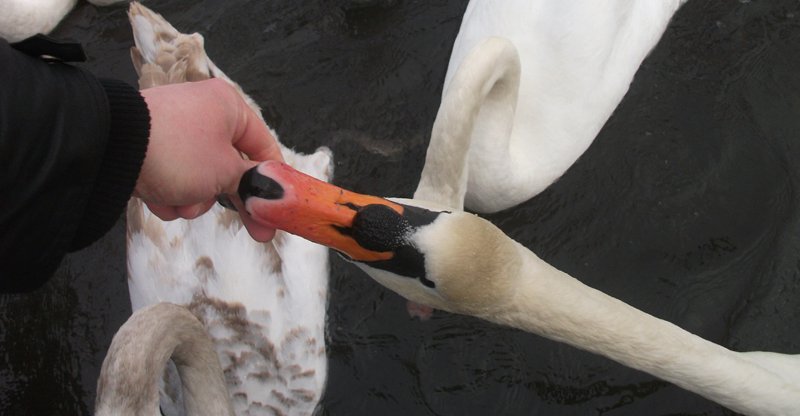
However, the Gray photo object appears – if interpreted as a swan – to have a proportionally longer, slimmer neck than a Mute swan. In the UK, the one swan well known for have a longer, slimmer neck than a Mute swan is the large Whooper swan…
Whooper swans are regular visitors to the UK (including Scotland and the Loch Ness area) but they’re novel enough to most observers that seeing one would still be considered by most people a ‘photo worthy’ event…
I think that this is what happened: Gray photographed a Whooper swan (presumably, but not necessarily, on Loch Ness), had a camera malfunction, and then opted to try his luck in passing it off as a monster photo… 



It’s remotely possible that he forgot that his photo was of a swan and somehow tricked himself into thinking that he’d seen a monster (remember that he was a True Believer), but I think that this less likely….
As usual with ideas on ‘monsters’ depicted in photos, this idea is NOT original to me, but comes from Loch Ness investigator (and – I don’t think he’ll mind me saying – one-time full-blooded Nessie ‘believer’) Dick Raynor… 

Dick first told me about the swan idea when we were filming the #LochNess episode of ‘History’s Greatest Hoaxes’ in 2016, later correcting my 2017 implication that a Mute swan (rather than a Whooper swan) was the culprit…
I should add here that I rarely claim originality on my ideas about ‘cryptids’ depicted in photos: they’re virtually always ones I’ve learnt from someone else. And I’m more than happy to admit this at every turn…
Remember Gray saying that the object he saw rose “about 3 ft” above the loch surface? It’s _possible_ that he was thinking of a swan in coming up with this figure, since the top of a swan’s head is about that far from the water. I’m speculating here, of course…
#HuntingMonsters featured a montage where the Gray photo was posed next to a Mute swan drawing (produced by Peter Gray… no relation)… 

#Nessie True Believer Roland Watson (mentioned upthread because of his Nessie Is A Pokemon hypothesis) has seriously argued that I deliberately used the low-quality tabloid version of the Gray photo in #HuntingMonsters in order to...
.... make the swan idea seem more robust than it might be if a higher-quality version were used… #Nessie #cryptozoology #lakemonsters 





This, of course, is nonsense: I would have preferred it if the publishers of #HuntingMonsters (Arcturus) had used the highest-quality version available (this being the one printed specially for writer and scientist Edward Heron-Allen in 1933 and later passed to Maurice Burton)…
…. but they didn’t, only because the poorer version is the one they purchased from whatever photo library they used. I stated exactly this on Watson’s blog… 

Some authors, you see, are so keen to promote their own stance on monsters that they’ll accuse you of dastardly and odd tactics, when far simpler explanations are out there and far more obvious…
That just about brings things to a close. There’s no real interest in Gray’s photo today. Every now and again someone unfamiliar with it sees it anew and is tricked by the ‘swimming labrador’ explanation, but by and large it’s ignored… 

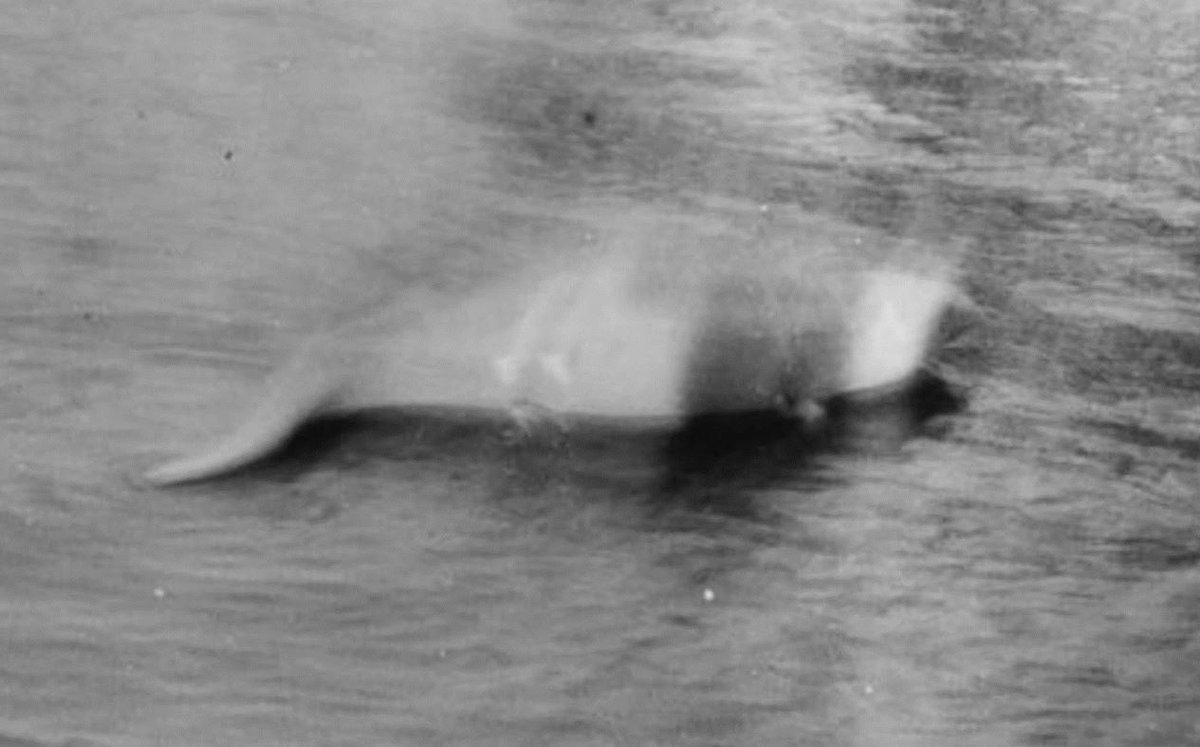

As Binns said in The Loch Ness Mystery Reloaded, the photo simply isn’t seen as worthy of serious investigation anymore: long gone are the days where people seriously imagined that it might be possible to photograph a 40-ft-long serpentine monster on the loch’s surface…. 

And the fact that a True Believer photographed a swan and more or less successfully passed it off as a photo of a giant unknown animal for several decades tells us at least something about the state of #LochNessMonster research and the people involved in it…
In compiling this thread, I consulted a substantial number of books on the #LochNessMonster, most of which are shown here. The text is an embellished, expanded version of what’s included in my #HuntingMonsters (now hard to get in hardcopy but still in print as an ebook)… 



Please consider buying Hunting Monsters if you don't already own it.... amazon.co.uk/gp/product/B01… #cryptozoology #monsters #ebooks #books
Here’s your reminder that I’ve now done a whole bunch of these #TetZoocryptomegathread things. I’m now taking quite seriously the idea that they should be compiled into a well-illustrated book.... 

.... More threads like this one are coming, if you want me to do more and devote more time to this sort of thing, please consider supporting me at patreon: patreon.com/TetZoo --- END
UPDATE: I made a mistake in saying that Constance Whyte's book of 1955 was the first book on #Nessie. It was of course preceded by Rupert Gould's of 1934.
• • •
Missing some Tweet in this thread? You can try to
force a refresh


